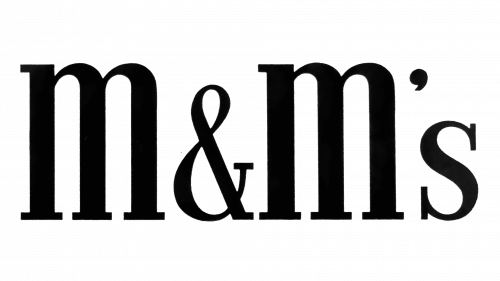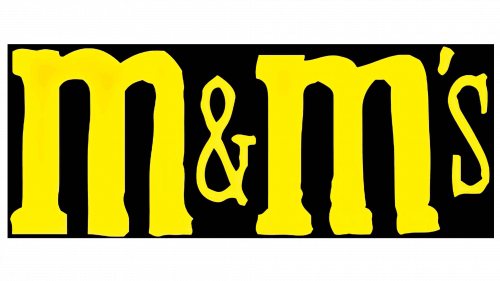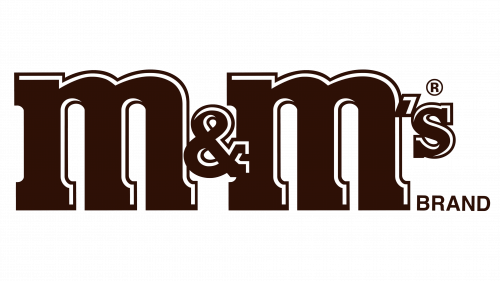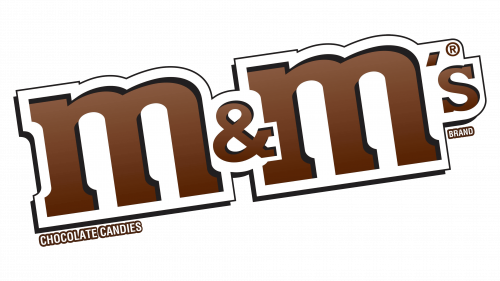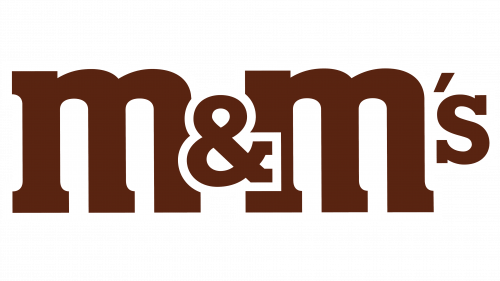M&M Logo
M&M’s is a brand of Mars Inc. Multi-colored candies are produced by the M&M Candies division. Bright candy quickly gained popularity. Many tried to make similar sweets, so the company added the letter “M” to the candies and used the slogan “Look for “M” on every piece”. Mars Inc. claims that they were the first candy that went into space when M&M`s were chosen by American astronauts in 1982.
Meaning and History
Forrest Mars saw glazed sweets that do not melt being carried by Spanish soldiers. He liked the idea and “invented” similar candy after returning from Europe to the USA. Mars teamed up with Bruce Murier (son of the chief executive of the Hershey company) and launched M&M’s in 1941. The name came from the first letters of their last names. It was not changed even when Mars bought out the partner’s share and became the sole owner of the brand.
What is M&M?
M&M’s are multi-colored small chocolate-coated candies manufactured by Mars Incorporated. In addition to peanut and chocolate candies, the company has released candies with more than 50 flavors during its existence.
1941
The initial emblem of M&M’s, crafted in 1941, boasted a rich color scheme dominated by shades of deep orange and earthy brown. The backdrop featured a sturdy brown rectangular banner, upon which rested prominently styled orange lowercase letters, designed using a classic serif font. The entire arrangement radiated a sense of professionalism and steadfastness, reflective of the brand’s commitment to quality. This combination of colors and style made the logo both memorable and distinctive, setting a strong foundation for the brand’s identity in its early years.
1941 – 1954
The logo simply stated the brand’s name. Thus, the way it was written was quite important. It featured to large lowercase letters “M” done using a classic typeface with serifs. The “&” sign was placed between them and was slightly lower than the two letters. An apostrophe and a small uppercase letter “S” followed next. The brand played with uppercase and lowercase letters as well as their size, which made the wordmark quite unique. It was done in black.
1954 – 1970
The company kept the original idea of large lowercase “M”s. However, this time, it looked like they were handwritten with rough edges and not so straight lines. The “&” sign along with the “S” at the end were much thinner and no longer aligned at the bottom. Such change along with the switching to a yellow color for the letters and black background made the main letters stand out.
1970 – 1988
The company kept the idea of thicker lines for the main letters and thinner lines for the signs and the “S”. The wordmark got a clean, printed look, which made it look more professional. The letters also looked shorter. Moreover, the company abandoned the bright yellow color and black background introduced earlier and switched to a dark brown.
1986 – 1991
The updates made in 1986 did not change the look of the logo much. The brand kept the original idea and played with the thickness and color of the letters once again. The brown color got noticeably brighter. All the letters and signs looked thicker and the “&” sign along with the “S” were shorter. The two large “M”s were drawn closer together, but otherwise, the wordmark closely resembled the previous version.
1991 – 2000
In 1991, M&M’s underwent a logo revamp that transformed the hue of the brown used in the robust lowercase lettering, giving it a warmer, softer touch that resonated more with the essence of “chocolate”. The character forms experienced a subtle makeover as well, resulting in the letters appearing a tad broader and more compressed. This subtle shift was an attempt to ensure that the brand’s visual representation was more in tune with its product, emphasizing the rich chocolatey essence it has always been celebrated for. The changes, though minor, added a touch of modernity while staying true to the brand’s roots.
2000 – 2004
All the letters looked even shorter, although the font style was kept the same. The two “M”s were printed even closer together, so the “&” sign was slightly overlapping both of them. The brown color now had more red in it. Moreover, every element of the logo had a white highlight on top and the right side, which gave it a 3D feel. The updates were not significant, so the brand image looked very recognizable.
2004 – 2018
The company wanted its logo to look more interesting, so it printed the emblem with the right end being higher than the left. An addition of a white background with a brown outline and shadow that contoured the whole logo made it look like it was a sticker. The letters were chocolate brown with a darker gradient at the bottom. It kept the 3D effect by adding a dark shadow instead of a highlight. The new spin on the familiar logo definitely made it more eye-catching.
2019 – Today
The update introduced in 2019 was the most minimalistic compared to what was done before. All the brand has done was switch the color to an even darker shade of brown. The logo reminded of the original black version of the logo.
2022 – Today
In 2022, M&M’s underwent a brand transformation, retaining its signature emblem. Behind this change was the American conglomerate Mars, the owner of this beloved chocolate candy brand. Leadership partnered with the innovative design agency, Jones Knowles Ritchie, aiming to enhance brand recognizability while staying true to its foundational ethos.
Ultimately, the “M&M’s” label was reoriented to a horizontal alignment. The sole notable omission was the circular “R” (indicative of a registered trademark), which previously hovered above the “s.” This spatial redesign accentuated the ampersand, a symbol of connection that also alludes to the brand’s origin story, representing its co-founders: Mars & Murrie. The emblem now encapsulates the brand’s commitment to fostering human connections.
Even with the name’s horizontal presentation, the logo maintains its spirited dynamism. It harks back to the designs of 1986 and 1991, with a renewed focus on the centrally-placed ampersand, now highlighted in white, slightly overlaying the twin Ms. The hue of the brown letters was lightened, a conscious decision by the designers to infuse the logo with a brighter, more upbeat vibe, while sidestepping any superfluous color additions.



